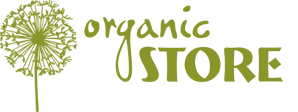 Numerous skin and hair care products contain different kinds of surfactants (surface-active agents) that are responsible for their detergent effect. A lot of people think that surfactants are bad for skin and hair, but the truth is, cleansing products can’t not contain them. That’s why you need to know what kinds of surfactants are used in cosmetics.
Numerous skin and hair care products contain different kinds of surfactants (surface-active agents) that are responsible for their detergent effect. A lot of people think that surfactants are bad for skin and hair, but the truth is, cleansing products can’t not contain them. That’s why you need to know what kinds of surfactants are used in cosmetics.
To understand the purpose of surfactants in various cosmetic products, you need to learn what surfactants are and how they work. Scientifically speaking, surfactants are organic compounds that lower the surface tension between two liquids, a liquid and a gas, or a liquid and a solid. This happens because surfactants consist of hydrophobic (water-repellent) groups and hydrophilic (water-attractant) groups.
Therefore, the hydrophilic component of a surfactant dissolves in water, while the hydrophobic component is mixed with oil, helping to mix the water phase and the oil phase together. As a result, surfactants act as emulsifiers, thickeners, detergents and foaming agents. Consequently, surfactants are used in various cleansing cosmetic products, such as soaps, shampoos, shower gels, hair conditioners, toothpastes, facial cleansers, etc.
The thing is, our skin and hair are covered with a very thin protective layer of sebum (skin oil) which is produced by the sebaceous glands. Since oil is insoluble in water, sebum makes it hard to wash away all impurities using water alone. Surfactants help water and oil to mix, allowing cleansing cosmetic products to remove all dirt from your skin or hair.
As a result, all facial cleansers, shampoos, shower gels, toothpastes, liquid soaps, and other personal care products with cleansing properties contain some kind of surfactant. In addition, surfactants can be used as emulsifiers and thickeners in creams, toners, lotions, hair conditioners and masks, as well as other skin and hair care products.
Depending on their origin, surfactants used in cosmetic products can be natural (derived from raw plant materials), mineral (derived from oil or gas) or synthetic (synthesised artificially). Depending on the composition of their head (hydrophilic group) and the associated mechanism of action, surfactants are divided into two big groups: non-ionic and ionogenic. The latter group includes anionic (negatively charged), cationic (positively charged), and amphoteric (both positively and negatively charged) surfactants.
Anionic (alkaline) surfactants are the most common surfactants used in cosmetic products because they are cheap and have good foaming and detergent properties. Their main drawback is that anionic surfactants can be too aggressive and drying to the skin. The infamous SLS (sodium lauryl sulfate) and SLES (sodium laureth sulfate) belong to this very group of surfactants.
Cationic (acidic) surfactants are less widely used than anionic surfactants. Due to their conditioning effect, they are most often found in hair conditioners and masks. Like anionic surfactants, they can be quite aggressive, which means that you should rinse them off very thoroughly and avoid prolonged contact of cationic surfactants with your skin.
Amphoteric (zwitterionic) surfactants are pH-neutral, and their surface activity is regulated by the acidity of the liquid medium: in an alkaline medium with a pH above 7 they act like anionic surfactants, and in an acidic medium with a pH below 7 they act like cationic surfactants. In cosmetics, amphoteric surfactants are used as auxiliary surfactants; they are valued for their high biocompatibility with skin and hair combined with low toxicity.
Finally, non-ionic surfactants have no charged groups in their heads. Their main task is to reduce the aggressiveness of other types of surfactants. Non-ionic surfactants are the second most widely used type of surfactants after anionic surfactants. They are not very good foaming agents, but they make the skin and hair softer and are completely biodegradable.
Since all kinds of surfactants have different purposes, most cleansing cosmetic products are usually formulated with several types of surfactants to achieve the best result. Let’s take a closer look are some of the most common surfactants and figure out which of them are the best for your skin and hair.
SLS, SLES
Sodium lauryl sulfate (SLS) and sodium laureth sulfate are perhaps he most widely known surfactants. Alas, it is not for a good reason. Both surfactants are known irritants that may dehydrate the skin and cause redness, flaking, and other problems. To reduce the aggressiveness of SLS and SLES, they are typically combined with amphoteric and non-ionic surfactants.
Sodium Coco-Sulfate (SCS)
Sodium coco-sulfate is an anionic surfactant which is similar in structure to sodium lauryl sulphate, so many consumers are reluctant to buy shampoos and shower gels with SCS. However, this surfactant its much less aggressive than SLS, and its use in small concentrations is allowed even in natural cosmetics. SCS is commonly found in skincare products for oily and normal skin, and in hair care products for normal, oily and tinted hair. However, if you have dry skin and/or hair, you should be careful with products that contain sodium coco-sulfate.
Cetrimonium Chloride
Cetrimonium chloride is a cationic surfactant that also has antiseptic properties. Like other cationic surfactants, it is used as a conditioning ingredient in skin and hair care products and is combined with anionic surfactants. Pure cetrimonium chloride in high concentrations is an allergen and can be toxic, but it is considered safe when used in low concentrations in rinse-off products.
Cocamide DEA, Lauramide DEA, Linoleamide DEA and Oleamide DEA
These surfactants are obtained from natural fatty acids; they belong to non-ionic surfactants. Cocamide diethanolamine is derived from coconut oil, lauramide DEA is derived from lauric acid, linoleamide DEA is derived from linoleic acid, and oleamide DEA is derived from oleic acid. Lauramide DEA is considered the most aggressive of these four surfactants.
Decyl Glucoside
This is a mild non-ionic surfactant derived from raw plant materials. Decyl glucoside is added to cosmetic products as an auxiliary surfactant and also acts as a thickener. It is considered one of the safest surfactants and therefore is often used in natural and organic cosmetics.
Lauryl Glucoside
Lauryl glucoside is another mild non-ionic surfactant; it is derived from coconut or palm kernel oil and glucose (which, in its turn, is usually obtained from maize). This surfactant is considered eco-friendly because it is completely biodegradable. In cosmetics, lauryl glucoside is used as a mild cleansing agent and thickener; it also has conditioning properties.
Coco Glucoside
Coco glucoside is also a mild non-ionic surfactant; it is derived from coconut oil or the meat of mature coconuts and grape sugar. This surfactant is especially delicate and, just like other non-ionic surfactants, completely biodegradable. Coco glucoside is suitable for all skin and hair types, which makes it a popular ingredient in natural and organic cosmetics.
Cocamidopropyl Betaine
Cocamidopropyl betaine is an amphoteric surfactant used as a co-surfactant in foaming products in acidic, neural and highly alkaline media. It increases the viscosity of cosmetic products, acts as a stabiliser and foaming regulator. Cocamidopropyl betaine is considered a safe and mild surfactant.
Surfactants are widely used in various cosmetic products. To take really good care of your skin and hair, you should opt for cleansing products formulated with mild surfactants or a combination of ionogenic and non-ionic surfactants to prevent skin irritation and dryness.
Such surfactants are usually found in natural and organic cosmetics. In our online shop Organic Store, you can find a great selection of natural and organic cleansing products with safe surfactants. We offer reasonable prices, convenient payment methods, and international delivery to most countries.
Cosmetic Products with Safe Surfactants in Our Store
Mayur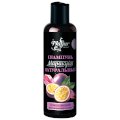 Passion Fruit Cleansing Shampoo for Oily Hair, 200 ml |
Mayur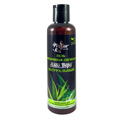 Aloe Vera Natural Intimate Hygiene Gel, 200 ml |
YAKA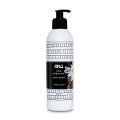 Cappuccino Shower Gel, 300 ml |
YAKA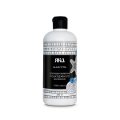 Restorative Shampoo for Damaged Hair, 500 ml |
